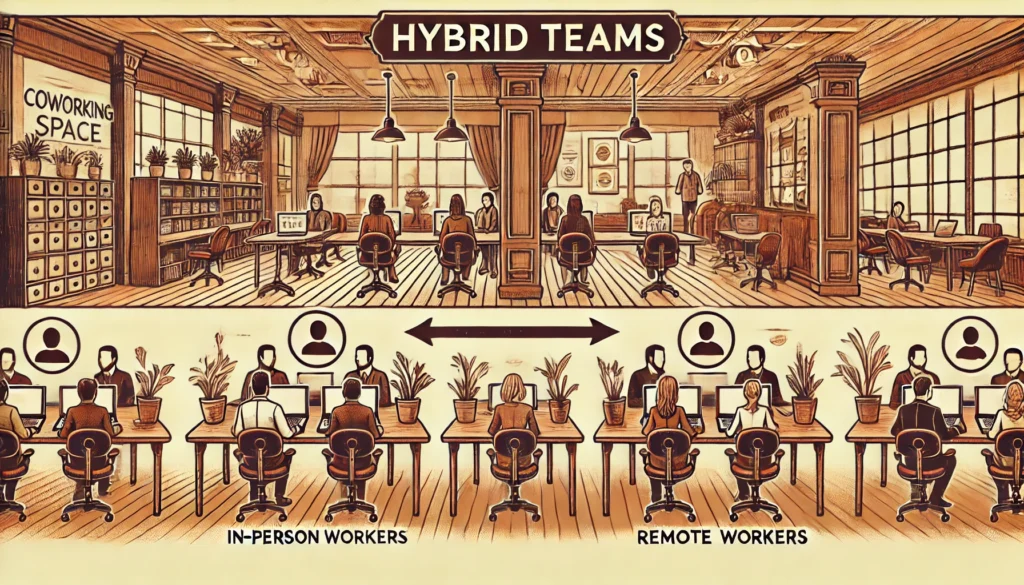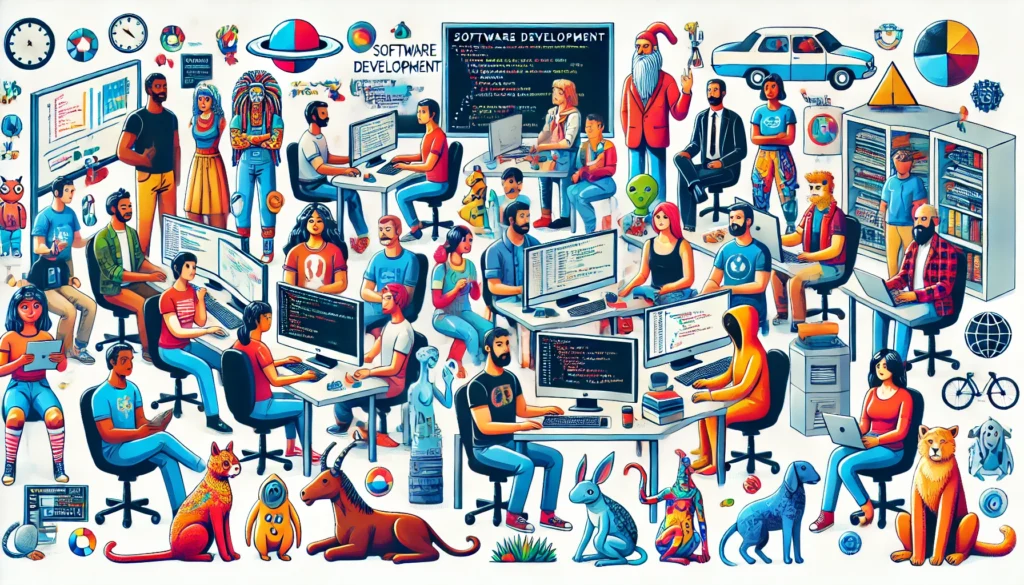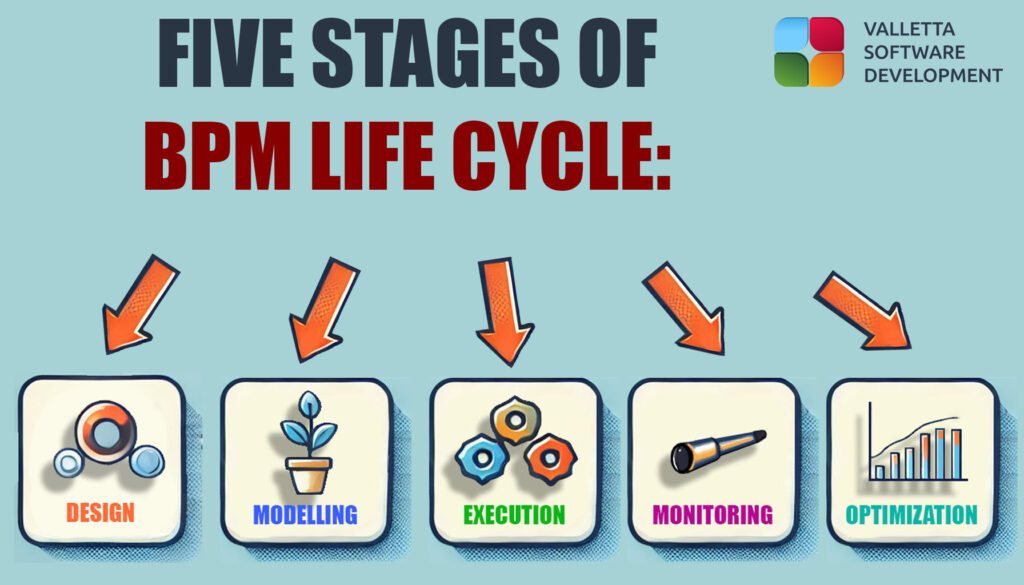Enhancing cultural integration in hybrid teams

Previous article: Mastering Agile methodologies for effective remote team management
Hybrid teams comprising members from diverse cultural and technical backgrounds, it’s a fact. When team members feel valued and understood, they are more likely to contribute their unique insights and skills, leading to richer solutions and enhanced project outcomes. The blending of different cultural viewpoints and technical expertise emerging thanks to cultural integration can lead to a more dynamic and adaptable team, capable of tackling complex challenges with creativity and efficiency.
This article aims to provide startups with strategies for managing the integration of diverse cultural and technical backgrounds within hybrid teams.
Startup staffing plan: Scaling and innovating rapidly
- Rapid scaling techniques for startups
- Funding the future: Staff augmentation's financial benefits
- Mastering Agile methodologies for effective remote team management
- Enhancing cultural integration in hybrid teams — you are here
Understanding hybrid teams
Definition of hybrid teams
A hybrid team is a flexible team structure that combines remote workers and in-office employees on the same team. Key aspects include:
- Combination of work arrangements. Members work both remotely and from a central office location or other physical workspace.
- Flexible work preferences. Team members can choose their preferred work arrangement (remote or in-office), promoting increased workplace flexibility.
- Fluid composition. The mix of remote and in-office members may change over time based on individual preferences or business needs.

- Maintaining physical space. While providing flexibility, the hybrid model maintains a physical office for collaboration and face-to-face interactions when needed.
The hybrid team model aims to attract and retain talent by offering workplace flexibility while ensuring that collaboration, clear communication, and trust are maintained across different work environments.
Challenges of hybrid team cultural integration
- Communication gaps. One of the primary challenges is ensuring effective and consistent communication across various locations, time zones, and work environments. Communication gaps can lead to misunderstandings, conflicts, isolation, and reduced productivity. Ensuring all team members are equally informed and engaged is crucial for seamless operations.
- Collaboration barriers. Fostering a collaborative and inclusive environment where all team members can contribute equally can be difficult. Barriers may arise from different levels of access to information, resources, and support, as well as biases and stereotypes. Addressing these issues requires deliberate effort to create a level playing field for all members.
- Engagement and motivation. Maintaining high levels of engagement and motivation among both remote and on-site workers is another hurdle. Engagement issues can stem from a lack of visibility, recognition, connection, burnout, and stress. Implementing strategies to keep all team members motivated and connected is essential for sustaining productivity and morale.
- Team cohesion. Achieving strong team cohesion and seamless collaboration can be challenging due to reliance on technology and digital communication tools. These tools can hinder the organic development of team relationships and dynamics. Building strong interpersonal connections within the team requires intentional team-building activities and regular, meaningful interactions.
- Cultural integration. Integrating the diverse cultures, work practices, and norms of in-house and outsourced team members is vital for effective collaboration but can be difficult to achieve. Promoting cultural awareness and sensitivity is necessary to create an inclusive environment where all team members feel valued and understood.
- Unequal opportunities. There is a risk of unequal opportunities, where in-office team members may have more visibility, recognition, and advancement prospects compared to remote workers. This disparity can lead to feelings of alienation and resentment among remote staff. Ensuring fair and equal opportunities for all team members is crucial for maintaining harmony and satisfaction within the team.
Strategies for cultural integration and inclusion
This section outlines key strategies for fostering cultural integration and building an inclusive environment within your hybrid team.
Enhancing cultural understanding
- Invest in cultural sensitivity training. Regular cultural integration training equips team members to appreciate cultural differences, improving communication, reducing misunderstandings, and promoting a harmonious environment.
Building an inclusive team culture
- Embrace diversity. Celebrate the unique backgrounds and perspectives your team members bring. Encourage open dialogue and sharing personal stories.
- Promote psychological safety. Create a safe space for everyone to express ideas without fear of judgment, fostering trust and innovation.
- Lead with inclusion. Leaders should model inclusive behaviors, actively seek diverse perspectives, and ensure equal opportunities for all.
- Develop inclusive practices. Implement accessible communication tools, accommodations for disabilities, celebrate cultural events, and offer flexible work arrangements.
- Empower allyship. Encourage team members to support each other, especially those from underrepresented groups.
- Continuously improve. Regularly assess your team's inclusivity through feedback and surveys, striving for continuous improvement.
Celebrating diversity

- Cultivate an inclusive and respectful environment. Ensure everyone feels valued for their unique background.
- Promote cultural awareness. Promote cultural integration by hosting regular cultural events, provide educational resources, and encourage open dialogues about different cultures.
- Fuel creativity and innovation. Leverage the diverse pool of talent and experiences within your team to drive creative solutions and decision-making.
- Foster a sense of belonging. Recognize and celebrate diverse identities, building a strong team community.
Strategies for celebration
- Organize cultural events. Showcase different cultural traditions and cuisines through team events.
- Establish employee resource groups. Create employee-led groups focused on supporting diverse communities.
- Recognize cultural holidays. Acknowledge and celebrate significant cultural dates.
- Promote diverse leadership. Ensure diverse representation in leadership roles to inspire and empower.
- Implement equitable policies. Uphold fair policies that actively support diversity within your team.
Technical integration techniques
Standardizing processes and tools
Standardizing work processes and tools across a team is essential for streamlining collaboration and minimizing technical friction. Here are key steps to achieve this:
- Process mapping and documentation. Begin by identifying and mapping out existing processes. Document each step, role, and responsibility involved. This serves as a foundation for standardization.
- Standard operating procedures (SOPs). Develop detailed SOPs outlining step-by-step instructions for performing specific tasks. These ensure consistency and provide a reference for training and auditing.
- Business process management (BPM) tools. Implement BPM software or workflow automation tools to standardize and automate processes. These tools help in defining, executing, and monitoring processes, ensuring adherence to established standards.

- Adopt best practices. Research and integrate industry best practices and methodologies such as Lean, Six Sigma, or Agile.
- Training and change management. Provide comprehensive training on standardized processes and tools. Effective change management strategies are crucial for successful adoption.
- Continuous improvement. Regularly review and refine standardized processes based on feedback and performance metrics. Foster a culture of continuous improvement to maintain effectiveness.
Standardization is a proven way for your company to achieve greater efficiency, consistency, and quality control, leading to improved productivity and customer satisfaction.
Skill mapping and gap analysis
Skill mapping and gap analysis are crucial for identifying current technical strengths and areas needing improvement within a team. Here’s how to conduct effective skill mapping and gap analysis:
- Skill inventory. Assess the current skills and proficiency levels of employees through assessments, interviews, and performance reviews.
- Mapping skills. Map the skills required for different roles, projects, and organizational objectives. Compare current skills with desired skills to identify gaps.
- Gap analysis. Prioritize skill gaps based on their impact on organizational performance. Develop strategies to address these gaps through training, hiring, or job redesign.
- Inclusive process. Involve employees in self-assessing their skills and proficiency levels. Consider both technical and soft skills needed for various roles.
- Align with goals. Ensure that skill mapping aligns with organizational goals and future needs. Use this data to guide talent management, workforce planning, and upskilling efforts.
Effective skill mapping and gap analysis enable organizations to proactively identify skill deficiencies and take targeted actions to bridge these gaps, ensuring a competent and skilled workforce.
Facilitating knowledge sharing
Establishing mechanisms for ongoing knowledge sharing and mentorship is vital to ensure all team members can learn from each other’s technical expertise. Here are strategies to facilitate knowledge sharing:
- Clear communication channels. Establish consistent communication channels such as regular team meetings, instant messaging platforms, and collaborative document-sharing tools.
- Promote a culture of sharing. Encourage a culture that values and rewards knowledge sharing. Recognize and celebrate employees who actively contribute to knowledge sharing.
- Leverage technology tools. Utilize technology tools such as video conferencing platforms for virtual meetings, social networking tools for informal exchanges, and knowledge repositories for storing and accessing information.
- Mentoring and peer learning. Implement mentoring programs where experienced employees can share their knowledge with others. Encourage peer-to-peer learning initiatives.
- Communities of practice. Create communities of practice or interest groups that bring together individuals with shared interests or expertise for problem-solving and collaboration.
- Storytelling and knowledge-sharing sessions. Encourage employees to share their experiences and best practices through storytelling sessions, whether in person or via recorded videos.
- Incentives and recognition. Implement incentives and recognition programs that reward active participation in knowledge-sharing initiatives.
Communication strategies for hybrid teams
Optimizing communication channels
Selecting the right communication tools is vital for ensuring effective information flow in hybrid teams. Here are some key considerations:
- Establish clear channels. Implement a variety of communication tools tailored to different needs. Use video conferencing tools (e.g., Zoom, Microsoft Teams) for virtual meetings, instant messaging platforms (e.g., Slack, Microsoft Teams) for quick conversations, and project management tools (e.g., Asana, Trello) for task coordination and updates.
- Encourage asynchronous communication. Use email, shared documents, and recorded video updates for non-urgent matters. This accommodates different work schedules and time zones, reducing the need for constant real-time meetings.
- Foster open and transparent communication. Cultivate an environment where team members feel comfortable sharing their thoughts and concerns. Regularly solicit feedback and address any communication barriers promptly.
- Inclusive meeting practices. Ensure remote team members are fully engaged in meetings. Use video conferencing tools with screen-sharing capabilities, assign a facilitator to involve remote participants, and circulate meeting agendas and notes to keep everyone informed.
- Leverage collaboration tools. Utilize cloud-based tools (e.g., Google Workspace, Microsoft 365) for seamless document sharing and co-editing. Maintain a centralized knowledge base for consistent access to information.
By implementing these strategies, hybrid teams can ensure clear and effective communication, fostering a cohesive and productive work environment.
Regular check-ins and feedback loops
Regular check-ins and feedback loops are crucial for maintaining effective collaboration and performance management in hybrid teams. Here’s how to implement them:
- Weekly check-ins. Conduct weekly stand-ups to track progress on tasks and goals. Discuss achievements, blockers, and areas for improvement. Adjust goals as needed based on progress.
- Monthly/quarterly feedback. Schedule formal check-ins to review overall progress and goal attainment. Use these sessions for in-depth discussions on performance, development, and well-being.
- Continuous feedback. Encourage ongoing, informal feedback through various channels like chat and meetings. Foster a culture of open communication and continuous improvement.
- Best practices. Train managers on conducting effective check-ins and feedback sessions. Establish clear frameworks for check-in conversations. Use performance management software to automate formal check-ins and record notes and action items.
Implementing regular check-ins and feedback loops helps hybrid teams stay aligned, address issues promptly, and foster continuous improvement.
Conflict resolution practices
Effective conflict resolution is essential for maintaining a productive and harmonious work environment in hybrid teams. Here are key strategies:
- Active listening. Encourage team members to practice active listening during conflicts. This involves giving undivided attention, avoiding interruptions, and seeking clarification.
- Open communication. Establish transparent communication channels where team members can express concerns without fear of judgment. Regular check-ins help identify and address conflicts early.
- Empathy and respect. Promote an environment of empathy and respect. Encourage team members to understand each other's viewpoints and experiences through cultural sensitivity training and inclusive activities.
- Conflict resolution training. Provide training to equip team members with skills and techniques for effective conflict management. Use role-playing exercises and case studies tailored to the team’s needs.
- Collaborative problem-solving. Encourage a collaborative approach to conflict resolution. Team members should work together to identify root causes and explore mutually beneficial solutions.
- Mediation and facilitation. For complex conflicts, involve a neutral third party, such as a mediator, to guide the resolution process.
- Conflict resolution protocols. Establish clear protocols for addressing conflicts. Include escalation procedures, decision-making frameworks, and guidelines for seeking external support.
- Continuous improvement. Regularly review and refine conflict resolution practices based on feedback and lessons learned. Encourage sharing of experiences to improve the effectiveness of conflict resolution.
Measuring integration success
Measuring the success of an integration project, whether it involves merging companies, systems, or teams, is crucial to ensure the intended objectives are achieved and the expected value is realized. Here are some key metrics and approaches to measure integration success:
Acquisition rationale and integration objectives
- Define the rationale. Clearly outline the reasons behind the integration, such as achieving cost synergies, expanding market share, or gaining new capabilities.
- Set measurable objectives. Establish specific, measurable integration objectives aligned with the rationale, such as revenue growth targets, cost savings goals, or product line expansions.
- Track progress. Monitor progress against these objectives using quantitative metrics like revenue, costs, market share, and product portfolio changes.
Synergy realization
- Identify synergies. Quantify expected synergies (cost, revenue, operational) during the planning phase.
- Tracking mechanism. Develop a mechanism to monitor synergy realization over time, comparing actual results to projected targets.
- Measure synergy. Use metrics like cost savings achieved, cross-selling revenue increases, and operational efficiency improvements to measure synergy realization.
Cultural integration and change management
- Set goals. Establish clear goals for cultural integration, such as fostering a cohesive organizational culture, retaining key talent, and aligning values and behaviors.
- Employee feedback. Conduct surveys and focus groups to assess cultural alignment, engagement levels, and the effectiveness of change management efforts.
- Monitor metrics. Track metrics like employee turnover rates, productivity levels, and the adoption of new processes or systems to gauge cultural integration success.
Customer and stakeholder satisfaction
- Gather feedback. Collect feedback from customers, suppliers, and other stakeholders to understand their experiences and concerns.
- Measure satisfaction. Use metrics like customer satisfaction levels, retention rates, and net promoter scores to evaluate the impact of the integration on customer relationships.
- Track sentiment. Monitor stakeholder sentiment and engagement levels to ensure their continued support and alignment with integration objectives.
Operational and financial performance
- Establish KPIs. Define key performance indicators related to operational efficiency, such as process cycle times, inventory levels, and system uptime.
- Monitor financial metrics. Track metrics like revenue growth, profitability, cash flow, and return on investment (ROI) to assess the financial impact of the integration.
- Compare performance. Compare actual performance against pre-integration baselines and projected targets to measure the success of the integration in driving operational and financial improvements.
Conclusion
Successfully integrating diverse teams, systems, or companies requires clear objectives, robust tracking mechanisms, and a focus on both technical and cultural aspects. By standardizing processes and tools, mapping and addressing skill gaps, facilitating knowledge sharing, and implementing effective communication and conflict resolution strategies, hybrid teams can enhance collaboration and performance.
Measuring integration success through well-defined metrics ensures that the intended goals are achieved, fostering a cohesive, efficient, and innovative work environment. Embrace these strategies to unlock the full potential of your integrated team and drive sustained organizational success.
Next article: Staff augmentation for outsourcing companies 101
Egor Kaleynik
IT-oriented marketer with B2B Content Marketing superpower. HackerNoon Contributor of the Year 2021 Winner – MARKETING. Generative AI enthusiast.
Featured in: Hackernoon.com, Customerthink.com, DZone.com, Medium.com/swlh
More info: https://muckrack.com/egor-kaleynik